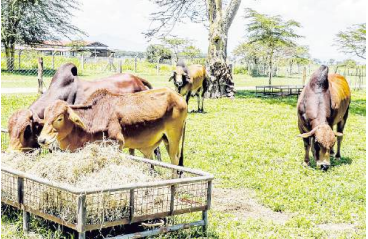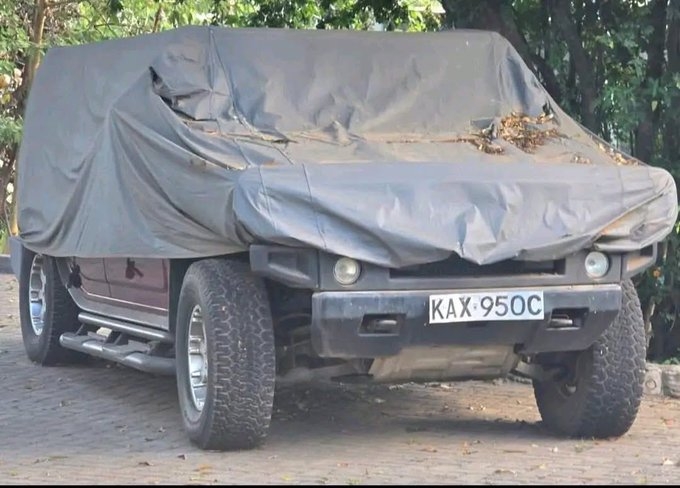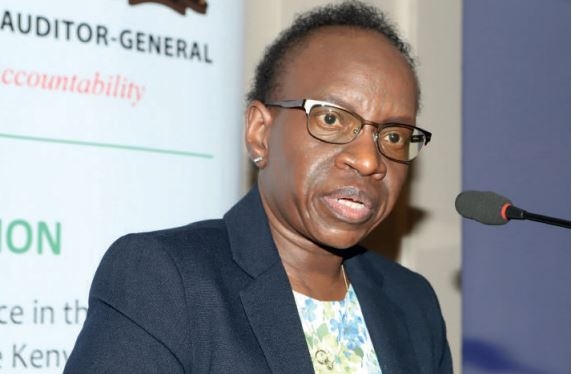

Developing better breeds of beef and dairy cattle, goats and sheep will help them adapt to climate change and yield higher profits.
Kenya Agricultural and Livestock Research Organisation (Kalro) director of the Beef Research Institute, Dr Tura Isak,o told the Star that livestock is getting better, stronger, fatter and profitable.
“Kalro is breeding climate-smart animals,” he said.
“Be
it dairy, beef animals, sheep and goats. We are institutionalising breeding
programmes within the community.”
“We have beef in Kalro Lanet and dairy in Naivasha,” Isako says.
Kalro breeds nucleus at national centres. In livestock breeding, a nucleus is a group of elite, high-quality animals, typically female, with superior genetic traits, maintained separately for breeding.
They are a source of breeding stock, especially bulls, to enhance productivity, disease resistance and other desirable characteristics.
These animals, often on specialised farms or units, are the foundation for improving the genetic makeup of commercial herds.
Kalro’s crossbreeding also improves meat production. Some hardy breeds do well in arid and semi-arid areas.
Kalro partners with counties and trains breeder groups.
The community can get improved breeds from breeder groups at the county level, or from Kalro.
Improved breeds mean benefits and profits. An economic analysis shows farmers can earn between Sh10,000 and Sh15,000 per cow, once other costs have been factored.
Already, some feedlots with improved breeds have taken shape. One is in Kibiru, Tigania West in Meru county.
The Kibiru community beef feedlot was set up by the government to boost livestock production by providing farmers with better opportunities in local and export markets.
The feedlot was built to alleviate widespread poverty due to harsh weather. The eight-acre feedlot on community land can accommodate 400 cattle every cycle, which is about four months. It was commissioned on April 2 by President William Ruto.
To guarantee land ownership, the President issued 10,800 title deeds to local landowners.
The community feedlot aggregates animals from local cooperative societies.
The Ministry of Agriculture, Department for Livestock Development, works with the county government to provide livestock specialists who ensure animals are always healthy and fed well.
The contractor running the project will hand it over to the community-based organisation of 15 groups.
Fattening the livestock, especially during the drought, will not be a problem, as most of the people are livestock keepers with plenty of feed.
“The farmers around here are to be assisted with restocking, especially when drought wipes out their animals,” Tigania West deputy county commissioner Faith Murage said.
“The objective is to at least ensure each one of them has a cow or a bull brought here for about three to four months for fattening; once it’s fattened enough, they are sold locally or exported,” Murage said.
She said the community is supportive and they are satisfied to see the project operating.
The project has partnered with Safaricom to provide microchips to identify the animals.
It is benefiting the community, not only with nutrition but also with jobs and related businesses.
Dorcas Kawira is among the young people who have secured a job. She has a certificate in general agriculture and got the job when the project was launched.
“I got information that they would need people to work, and immediately applied through the Meru county government,” she said.
She ensures the area where the livestock are fattened is clean and the animals are in good condition, and keeps records.
“The weak animals are quarantined,” Kawira said, then they are treated and monitored.














